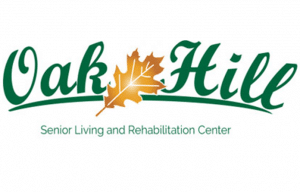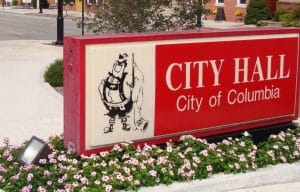Early growth, Lincoln visit follow county’s founding
This is the second in a monthly series looking back on Monroe County as part of its Bicentennial celebration in 2016. We previously wrote about events from the arrival of settlers into the area until about the time of the county’s establishment. This piece examines the period from 1818 to 1840.
The two largest communities in Monroe County were laid out over the first couple of decades after its founding. George Forquer is credited with laying out a plan for Waterloo in 1818, the same year Illinois became a state. Two years later, Louis Nolan performed a similar deed for Columbia.
Settlers kept arriving during these two decades, nearly tripling the county’s population from 1,548 in 1820 to 4,481 across the county’s 398 square miles (minus the 13 square miles of open water), by the 1840 count.
The county seat, originally established in 1816 in Harrisonville — west of that village’s location on the banks of the Mississippi River — moved up to dryer land in Waterloo in 1825.
Initial meetings of county government there were held inside David Ditch’s log home-turned-tavern located about where the old Waterloo fire station building sits today on North Main Street. That location was also where Illinois’ eighth governor, Thomas Ford, grew up.
Columbia — Waterloo’s neighbor to the north — saw settlement first, around Forts Whiteside and Piggot. Around 1833, that community’s population started to grow as German immigrants arrived directly from Europe, with many making the last leg of their journey up the Mississippi River to settle directly on land purchased before they left Europe.
Five years later, there are records of early discussions of building a permanent county seat building to replace the tavern as a government meeting place. This was accomplished in 1832. Although there are no known photos or drawings of the structure, we know it was a brick structure at the corner of today’s courthouse area where the bandstand exists today.
The Kaskaskia-Cahokia Trail was a more heavily travelled route in those days, and in the period of 1820-1830, several stagecoach stops were established in that time to pick up and deliver people and packages.
They offered food and drink, as well as overnight accommodations. Among them were the Buck Tavern on the south side of Columbia near the location of the former Immaculate Conception Catholic Church; the historic Peterstown House in Waterloo; and a third coach stop in Renault, where coaches could continue on the upper part of the trail, which Route 3 roughly follows today, or descend onto the lower section that traced Bluff Road’s early path.
A second county building was constructed in Waterloo in 1839 – the county jail. One had been built earlier at Harrisonville, but apparently crime had risen to the level at which county fathers felt the need for a new lock-up facility.
The summer of 1840 was a time for history to be made in Monroe County, as Abraham Lincoln came here to speak on behalf of the Whig Party. Records indicate Lincoln arrived in Waterloo on Sunday, Aug. 23. He had just won a fourth term in the Illinois House of Representatives a few days earlier.
Following two days of visits here, Lincoln delivered his address on the courthouse grounds on Tuesday, Aug. 25. It was customary in those days for political speakers to invite others of different persuasions to join them on their platform. Adam Snyder is recorded as having spoken for the opposing Democrats.
While Lincoln would eventually become a two-term President of the United States — making his visit here meaningful in retrospect — virtually nothing favorable was reported of his remarks on that day in 1840. In fact, Lincoln “seemed like a man traveling over unknown ground,” the Belleville Advocate reported of the event.
Lincoln departed the next day on an 80-mile journey to Mount Vernon, where he took part in another political debate on Aug. 26.
A revisit of Lincoln’s visit to this county will be a featured event on Aug. 6, when a “Bicentennial Palooza” with Max and Donna Daniels reenacting the roles of Abraham and Mary Todd Lincoln, will perform in Waterloo.
An authentic Civil War band will also perform that day, with all activities being centered on the courthouse square in Waterloo. Mark your calendars, or better yet, stop by the Republic-Times office at 205 W. Mill Street to get a copy of the official Bicentennial calendar that includes all celebratory events slated in the year.
For a far more in-depth look at Monroe’s County’s 200 years of history, head to the county clerk’s office and reserve a copy of the two-volume history book set that will be published at the Bicentennial’s end.
To read the first installment of this year-long series celebrating the county’s 200th anniversary, click here.






